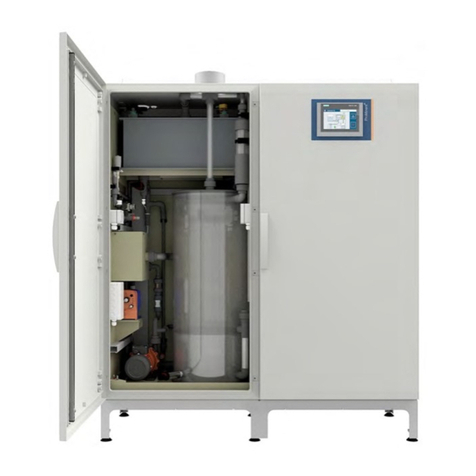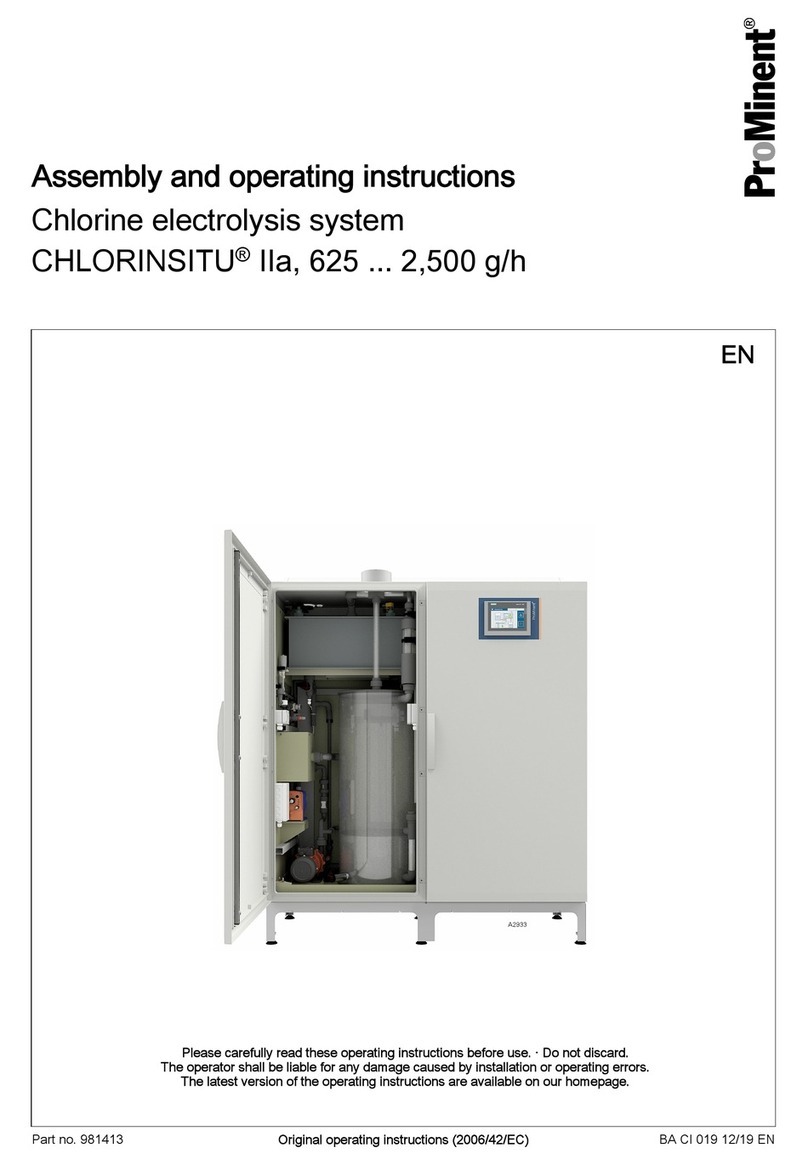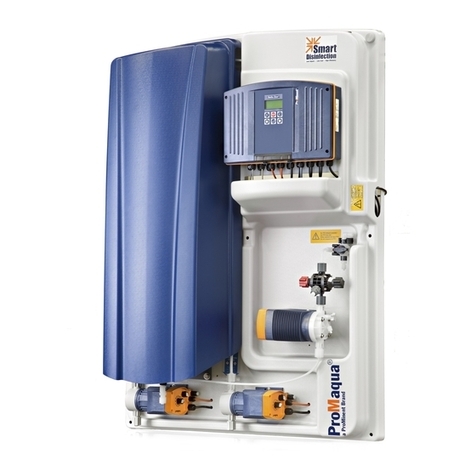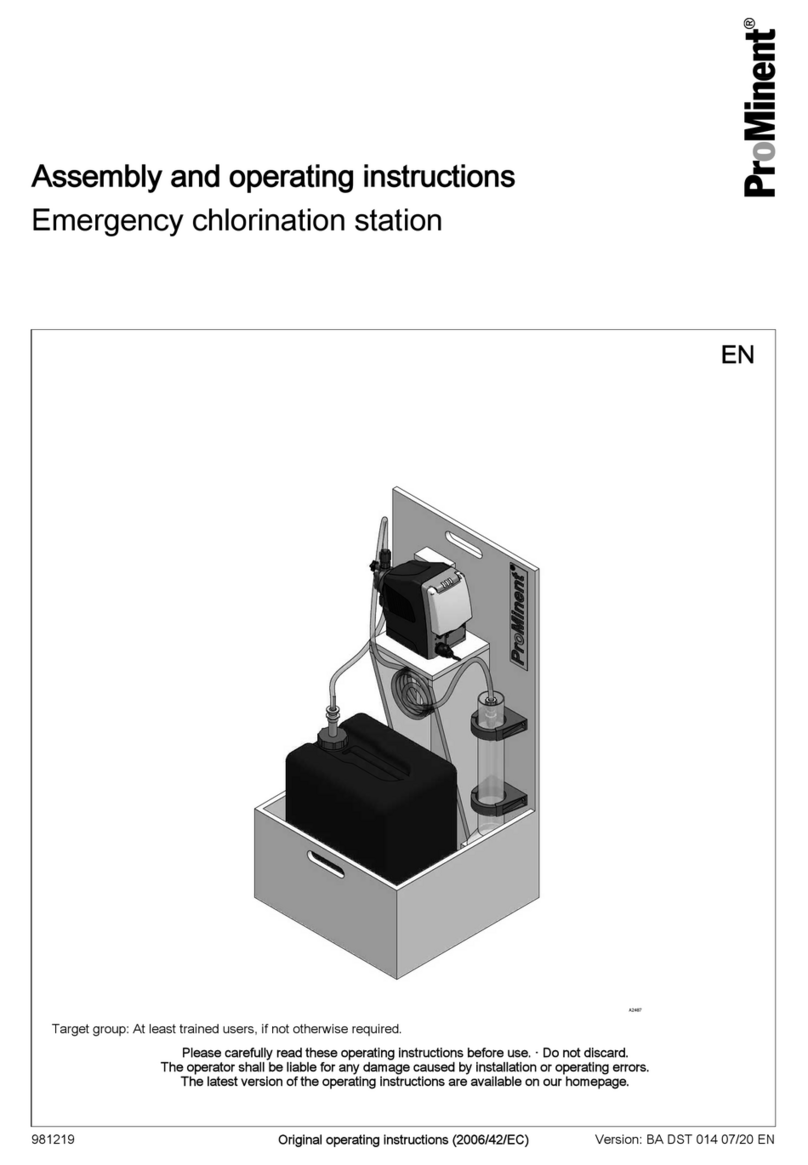
10.4.1 Checking the Float on the Level Switch................. 70
10.4.2 Cleaning the Suction Unit in the Brine Storage
Tank....................................................................... 71
10.5 Maintenance on the Lye Storage Tank..................... 72
10.5.1 Emptying the lye storage tank............................... 72
10.5.2 Replacing the O-rings on the Taps on the Bottom
of the Lye Storage Tank........................................ 73
10.5.3 Replacing the O-rings on the Couplings on the
Bottom of the Lye Storage Tank............................ 74
10.5.4 Replacing the O-rings on the Lye Storage Tank.... 74
10.5.5 Checking the Temperature Sensor on the Lye
Storage Tank......................................................... 74
10.5.6 Replacing the Level Switch in the Lye Storage
Tank....................................................................... 75
10.5.7 Maintenance on the Fan........................................ 75
10.6 Maintenance on the Diaphragm Cell ....................... 76
10.6.1 Replacing the O-rings on the Cathode Side of the
Diaphragm Cell...................................................... 77
10.6.2 Replacing the O-rings on the Anode Side of the
Diaphragm Cell...................................................... 78
10.6.3 Replacing the O-rings on the Brine Valve.............. 78
10.6.4 Replace the O-rings on the brine valve................. 79
10.6.5 Replacing the O-rings on the Bleed Pipe............... 79
10.7 Maintenance on the Anode Pipe............................... 79
10.7.1 The PVDF Float and Stop Pipe............................. 80
10.7.2 Replacing the O-rings on the Anode Pipe............. 81
10.7.3 Replacing the Bleed Valve..................................... 82
10.8 Maintenance on the Process Water System............. 82
10.8.1 Cleaning the Booster Pump Filter Insert................ 82
10.8.2 Replacing the Seals on the Water Jet Pump......... 83
10.8.3 Cleaning the Water Jet Pump Nozzle.................... 84
10.8.4 Replacing the Refresh Valve................................. 85
10.8.5 Replacing the O-rings on the Refresh Tap............ 85
10.8.6 Replacing the Lye Valve........................................ 86
10.8.7 Replacing the Seals on the Water Jet Pump......... 87
10.8.8 Cleaning the Water Jet Pump Nozzle.................... 88
10.8.9 Replacing the Flow Meter for Lye Suction............. 89
10.8.10 Replacing the O-rings on the Control Tap for Lye
Suction................................................................. 89
10.8.11 Maintenance on the Lye Pump............................ 90
10.9 Maintenance on the Control Cabinet........................ 91
10.9.1 Checking the Relay Contacts................................ 91
10.9.2 Cleaning the Filters ............................................... 92
10.10 Commissioning the System after Maintenance...... 92
10.10.1 Commissioning Process...................................... 92
10.11 Maintenance on the Chlorine Gas Detector............ 93
11 Maintenance kits................................................................. 94
12 Disposal of Used Parts....................................................... 95
13 Technical data for CHLORINSITU®-V................................. 96
14 EC Declaration of Conformity for Machinery....................... 98
15 Index................................................................................... 99
Table of contents
4


































